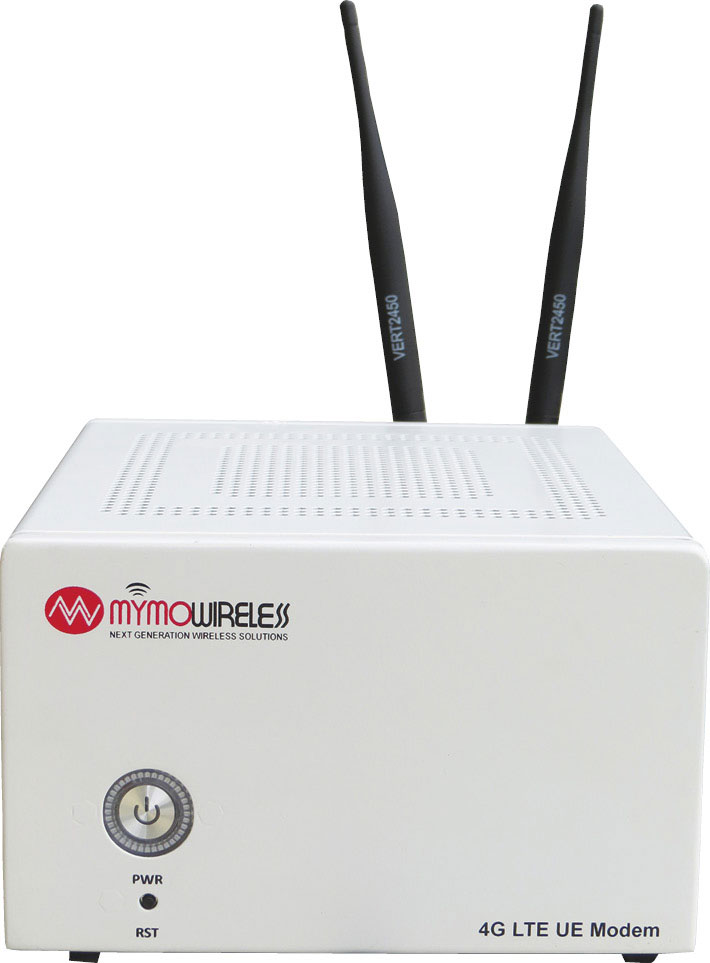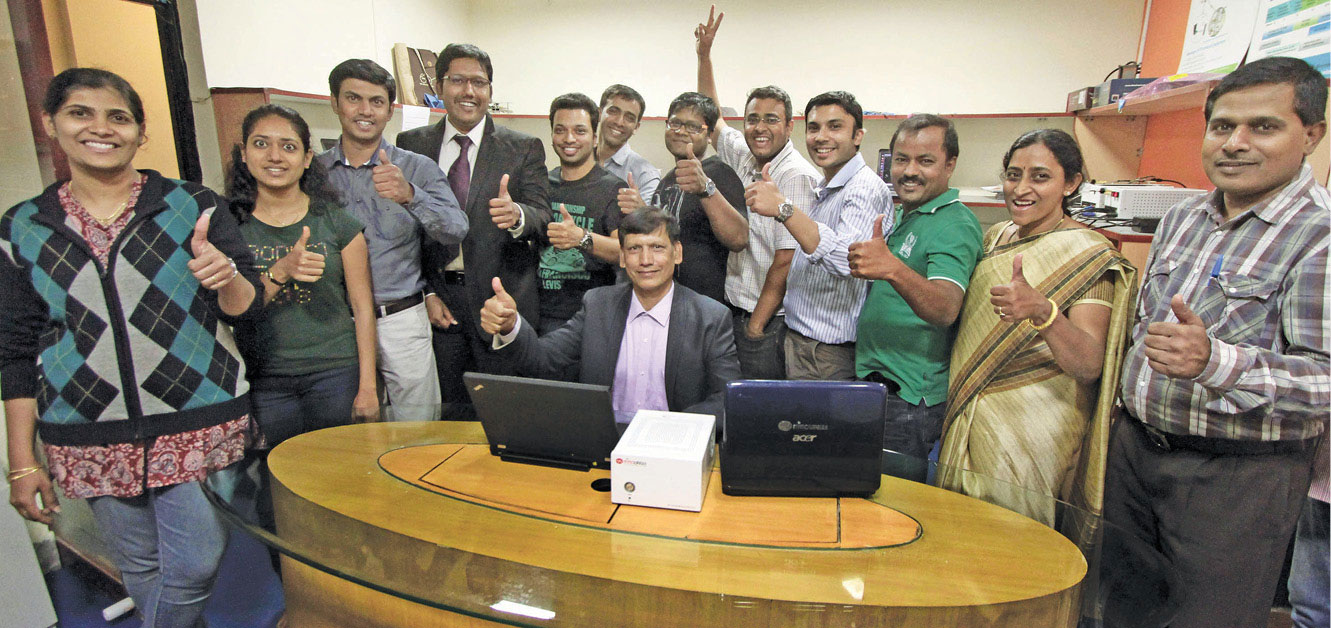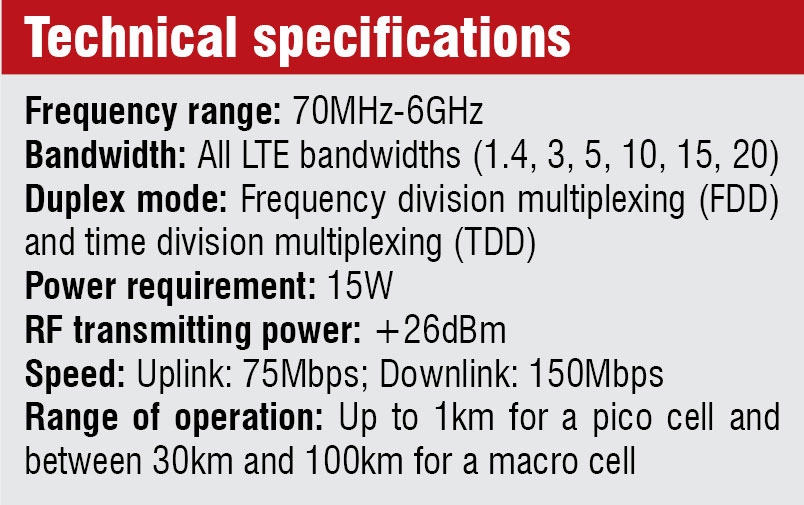In today’s world, no one wants to be stuck at one place while using Internet-connected devices or carry around bulky wires along with the equipment they use. Wireless technology is ruling the world and there is a growing demand for quality service at higher speeds.
This fact gave Mymo Wireless the insight to develop Long Term Evolution (LTE) standard for wireless communication. The need for developing indigenous technology that could create a benchmark in the Indian telecommunication industry as well as globally, provided the impetus to come up with a 4G LTE user equipment (UE) modem.
The product

‘A one-stop shop for the entire custom-made LTE stack’ is the developers’ proposition for the 4G modem. Developed using indigenous high-performance based systems and in-house products, the design uses a unique baseband receiver and other such algorithms, with optimised implementations. Having taken seven years from concept to completion, the modem is customisable for different applications in the domains of research and development, telecom, enterprise, military and Internet of Things (IoT)/machine-to-machine (M2M) communications, with upgradation in silicon, field programmable gate arrays (FPGAs) and digital signal processing (DSP). It also has many patents to its credit.
The design technology
The UE modem is built along LTE, also called 4G LTE, a standard for wireless communication of high-speed data for mobile phones and data terminals. Based on Global System for Mobile Communications (GSM)/Enhanced Data rates for GSM Evolution (EDGE) and Universal Mobile Telecommunications System (UMTS)/High-Speed Packet Access (HSPA) network technologies, LTE technology aims to increase capacity and speed using a different radio interface, together with core network improvements. Advanced DSP techniques and modulations have been used to achieve this and the network architecture is Internet Protocol (IP) based to reduce transfer latency. It operates on the LTE spectrum.
Their brainchild becomes the brain behind. Mymo developed an LTE UE ultra software radio (USR) called MWx000 (x denotes the generation). This radio provisions accessing baseband in real-time radio frequency (RF), flexibility in its coding and validation that is not possible even with DSP and FPGAs. This extends the capabilities of the radio and allows researchers to explore new algorithms.
MW2000 is a software defined radio (SDR), a radio communication system that is implemented completely by software configurations. The SDR is classified into tiers by Wireless Innovation Forum (WINNF) depending on the features offered by it, and MW2000 falls under Tier 4 category. This is the USR offering complete programmability and supporting a broad range of functions and frequencies at the same time. The functioning is very similar to that of a multifunction phone.
Overcoming the challenges
The major challenge faced by the team was financial constraints. Initially, Mymo sought funds for the investment from the Indian ecosystem, but that did not work out and they say that it was a challenge for them to sustain the company without external funding or investment. Continuously on the look-out for opportunities to generate revenue, they started licensing their technology to Tier 1 industries in the USA. As revenue generated from the customers increased, the fund requirements reduced. They moved on from technology licensing to customisation to royalty, based on particular requirements of global customers.
Developing the infrastructure offered challenges of its own. The first challenge was in developing the LTE. But what turned out to be more difficult was proving it in real-time RF as a product. It was a high-technology product development that required capital-intensive infrastructure.

The next challenge was acquisition of expensive software and hardware tools/technology for validating the accuracy of the design and its implementation. So Mymo received support from customers with free access to their labs for test and validation, along with software and hardware tools. Also, using their in-house product, MW2000, reduced the development, validation and verification time by 100 folds, with lesser manpower.
The development roadmap was long and highly competitive with near monopolies like Qualcomm, Huawei, Sequans and Altair that are established legacy product design houses. Venturing into such a high-tech product game required highly-talented human resources. The requirement then turned to a problem of retaining the talent, with competitive pay packages. A good balance on the pay and work culture proved right for them.
How unique it is
Offering LTE IP as a product turns out to be unique. There are competitors in the USA and Europe, but none, apart from big players, offer all three layers of the LTE protocol stack as a complete solution. Coming to their USR, MW2000, it is a first-of-its-kind LTE UE USR, Tier 4 SDR offering.

Mymo owns the technology behind this central processing unit based modem and thus has the flexibility to modify the design to fit requirements. Owning the IP and physical product, along with the ability to adapt to different market needs, is what differentiates Mymo Wireless from its peers. The UE modems are currently being customised for niche markets like avionics, high-speed railways, defence and satellite communications based on LTE. In addition, Mymo offers the best business value with flexibility of business components suitable for the customers, like one-time royalty cost to them on their technology licensing.
The road ahead
 Coming out of incubation from Indian Institute of Science in 2009, Mymo Wireless intends to go commercial with its full-blown commercial LTE IP and LTE products both in the local market and worldwide. Currently, the IP from Mymo is being used by customers in the USA including US defence, Europe including Europe civil aviation products, for Indian military in Military College of Telecommunication Engineering, Mhow, Indore and research organisations like Indian Institute of Technology, Hyderabad.
Coming out of incubation from Indian Institute of Science in 2009, Mymo Wireless intends to go commercial with its full-blown commercial LTE IP and LTE products both in the local market and worldwide. Currently, the IP from Mymo is being used by customers in the USA including US defence, Europe including Europe civil aviation products, for Indian military in Military College of Telecommunication Engineering, Mhow, Indore and research organisations like Indian Institute of Technology, Hyderabad.
With the huge market space of the IoT/M2M, Mymo Wireless, along with collaboration with companies from the USA and Europe, would be taping out one-of-a-kind ultra-low-power IoT/M2M LTE chip in the first quarter of 2016.
Mymo is also promising to release its own series of LTE chips for Indian and local markets ranging from the IoT/M2M, Cat1 to Cat4 for smartphones and other devices to cater to all LTE market requirements.
For all of the above, MWx000 is being used as proof-of-concept for pre-silicon IP validation by Tier 1 vendors like Verizon. The UE itself, as a product, is certified by Global Certification Forum. With LTE evolving, you can expect Mymo Wireless to aggressively follow suit and be the next Indian Qualcomm or Tier 1 company in this LTE domain worldwide.






